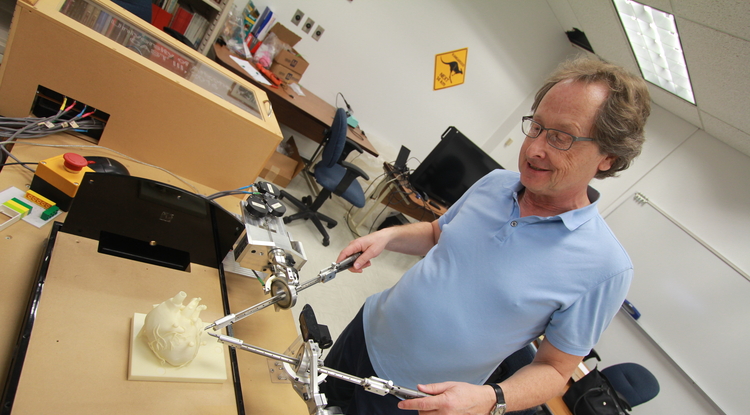The latest forecast from the Association of American Medical Colleges is startling: an expected shortfall of between 25,200 and 33,200 surgeons in the United States by 2025. As the population grows, surgeons retire and millennial physicians work shorter hours than their elders, those surgeons practicing at that time no doubt will be in demand.
This means it cannot be business as usual when it comes to getting surgeons into the health care workforce as quickly and efficiently as possible. Even traditional training methods will need to be reevaluated. That’s why a development led by The University of Arizona comes at a critical time.
The National Science Foundation has awarding $1.9 million for development and testing of the Computer-Aided Surgical Trainer (CAST), the first system to provide haptic guidance and augmented reality images for trainees when directly manipulating surgical instruments. Haptic guidance refers to sensations delivered through touch that allow the user to interact with the system.
The principal investigator of CAST is Jerzy Rozenblit, University of Arizona Distinguished Professor in the Department of Electrical and Computer Engineering with a joint appointment in the Department of Surgery. The grant will be awarded over a four-year period.
"Nobody is developing haptic guidance technology like we are," said Rozenblit. "We anticipate the CAST system will speed up learning, reinforce good habits and techniques, and discourage bad ones — and, ultimately, lead to better surgical outcomes and improved patient safety."
Using terms more suited to aerospace, Rozenblit described CAST as designed for "surgical space navigation" and features "no-fly zones." When a trainee moves the instrument toward a no-fly zone, vibrational or other haptic signals indicate a different course must be taken. Graphics on a video monitor illustrate the trajectory of surgical instruments to help users avoid danger zones.
Doctorial students worked with Rozenblit to develop the algorithms that recognize, guide and evaluate CAST user performance. The mathematical models help trainees precisely navigate obstacles and avoid surgical collisions, which can be catastrophic in laparoscopic procedures in which surgical tools collide with each other or patient anatomy. The CAST software also presents unexpected events that trainees might see during actual operations then analyzes responses.
In addition to developing more realistic and effective training, a major goal is to prove CAST's superiority over traditional surgical training. Co-principal investigator Dr. Allan Hamilton, a Harvard Medical School-trained neurosurgeon and professor of surgery in the UA College of Medicine, will guide training of up to 100 UA medical students, residents and surgeons on the device starting in 2019. Their performance will be compared with that of trainees taught laparoscopy by an experienced surgeon.
When pilot clinical training is complete, the resulting study will provide the first objective, data-based assessment of how well computer-aided training teaches basic tasks such suturing. "With computer-assisted surgery, we won't just say a surgeon has good hands,” Hamilton said, “we’ll be able to say exactly how good those hands are, or whether they show signs of tremor or slowed response time that neither the surgeon nor their colleagues can recognize."
Photo Credit: UA




